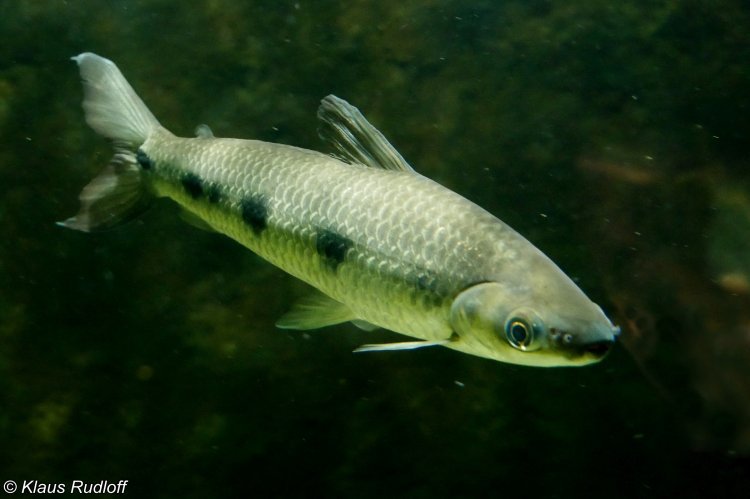
The mullet (Schizodon fasciatus) also called Amazonian mullet (Peru), boga lisa (Ecuador) or lisa de água doce (Brazil), is a freshwater species, abundant in all the rivers of the Amazon basin, including those of French Guiana.
This species of mullet should not be confused with the more commercially known sea mullet(Mugil cephalus).
Lisa or Boga Lisa Where to find her?
It is a freshwater fish, of the family Anostomidae, of the order Characifomes, which inhabits rivers with fast currents and rocky bottoms of the lowland rainforest, with a temperature between 22 and 28 °C (68 and 82 °F).
Its body is elongated, robust and tapered, with a small head, less than 18% of the body, and relatively large eyes. Its tail is deeply forked, which is an indication of its richness in omega-3 fatty acids.

© Klaus Rudloff/biolib.cz
Lisa feeding, behavior, and reproduction
Their diet is basically vegetarian. It feeds on plant debris, leaves and algae.
It is a migratory fish. Spawns from December to May. Presents parental care to protect their offspring. The male remains next to the nest to protect eggs and larvae.
The size at sexual maturity in males is 18 cm, and in females it is 22 cm. In the wild it can reach up to 40 cm in length.
Lisa commercial exploitation in the Amazon
Tests have been carried out to raise them in low-volume floating cages in the Yarincocha lagoon, in Pucallpa, in the Peruvian Amazon.
Its fat content is low, ranging from 1.40 to 5.71 %. Its protein content varies, but can reach up to 19%. Ash content, between 1.24 and 1.99 %.
Its caloric value is 71 to 126.19 per 100 g. Contains fatty acids: palmitic (saturated), oleic and linoleic (monounsaturated).
It contains a good proportion of minerals: phosphorus, calcium and potassium. It has a mercury content that almost reaches the tolerable limit.
It gives a good yield in culinary preparations, yielding 54.2% in skin-on fillets, with a total loss of 13.6%.

Dr. Rafael Cartay is a Venezuelan economist, historian, and writer best known for his extensive work in gastronomy, and has received the National Nutrition Award, Gourmand World Cookbook Award, Best Kitchen Dictionary, and The Great Gold Fork. He began his research on the Amazon in 2014 and lived in Iquitos during 2015, where he wrote The Peruvian Amazon Table (2016), the Dictionary of Food and Cuisine of the Amazon Basin (2020), and the online portal delAmazonas.com, of which he is co-founder and main writer. Books by Rafael Cartay can be found on Amazon.com
This post is also available in:
![]() Español (Spanish)
Español (Spanish)
